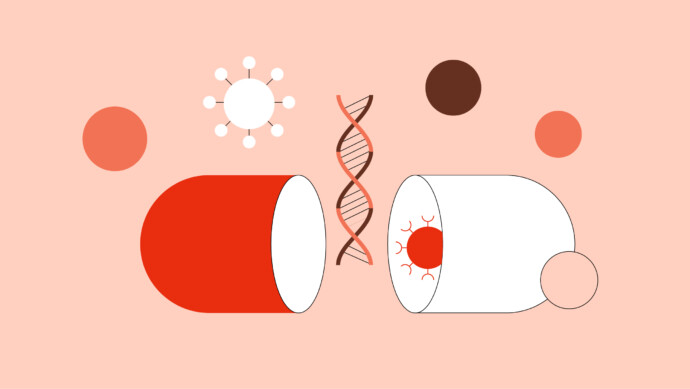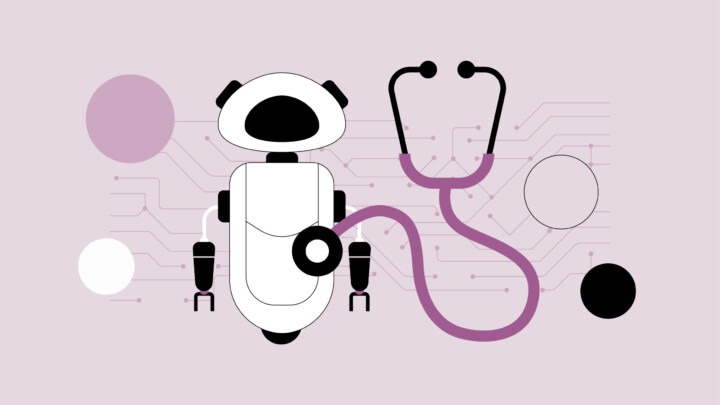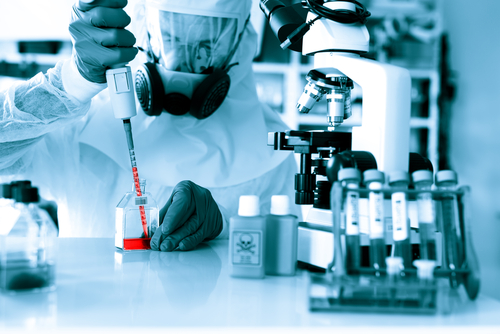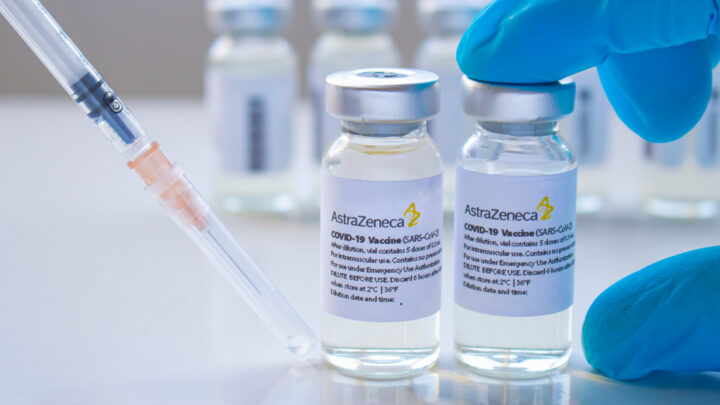
Modern medicine is rapidly evolving, with nanomedicine a standout field poised to fundamentally change how physicians diagnose, treat, and prevent disease. At the heart of nanomedicine’s promise is the ability to engineer materials at the nanoscale to solve complex medical challenges.
Tools such as nanoshells, micelles, polymeric carriers, and superparamagnetic iron oxide nanoparticle systems are being developed for targeted drug delivery and enhanced diagnostics. Magnetic nanoparticles offer advantages such as controlled drug release, magnetic guidance, and high biocompatibility that are absent in traditional therapeutics. Nanoscience, nanotechnology, and biotechnology breakthroughs drive the creation of next-generation biomaterials that intelligently interact with human physiology, already showing promise in early trials and clinical pipelines.
What is nanomedicine?
Nanomedicine involves the application of nanotechnology, utilizing nanomaterials and devices that operate at the atomic and molecular scale, ranging from 1 to 100 nanometers (nm), to address complex medical problems. A nanometer is one-billionth of a meter, roughly 100,000 times smaller than the width of a human hair. At this molecular level, nanomaterials exhibit unique properties, and challenges, that don’t exist at a larger scale.
To understand the breakthroughs making headlines, it helps to know the language. Below are some key terms that appear frequently in the field:
- Nanoparticle: abroad term for any particle with dimensions measured in nanometers.
- Nanosensor: ultra-small devices detecting biological/chemical signals at a molecular level, identifying biomarkers before symptoms.
- Nanobot: microscopic, programmable machines navigating the body for precise drug delivery, tissue repair, or targeting diseased cells.
- Quantum dot: nanoscale semiconductor particles emitting light when stimulated, explored for advanced imaging and targeted drug delivery due to unique optical properties.
- Micelles: tiny (5-100 nm), spherical particles formed by amphiphilic molecules in solution with hydrophobic tails and hydrophilic heads.
- Nanocarrier: nano-sized vessels (lipids/polymers) transporting therapeutic agents directly to specific cells/tissues.
Here’s why nanomedicines are so versatile and are being developed globally:
Targeted drug delivery: nanomedicine utilizes nanoparticles, such as liposomes, to precisely deliver cytotoxic drugs. These tiny nanocarriers (including nanobots) are key concepts in delivering drugs directly to diseased living cells. This increases drug concentration in targeted areas, reduces damage to healthy tissue, minimizes side effects, and is more cost-effective than conventional therapies.
In particular, dendrimers and nanoparticles—especially iron oxide and superparamagnetic varieties— are proving instrumental in delivering anticancer agents such as doxorubicin and docetaxel directly to living cells. These nanosized systems offer high biocompatibility, tunable release profiles, and enhanced pharmacokinetic control, making them ideal candidates for next-generation cancer therapy.
As nanoengineering evolves, integrating nanocrystals, quantum dots, and functionalized surfaces further optimizes targeted drug delivery mechanisms at the nanoscale.
Advanced diagnostics: nanosensors detect biomarkers at incredibly low concentrations, thereby improving early disease detection, a key area of focus in nanomedical applications. As a general surgeon shares on Sermo, “One of the most notable aspects of nanotechnology in surgery is its ability to provide more accurate diagnoses and early detection of diseases. Nanoparticles and nanostructures can be designed to interact with specific biomarkers in the human body.”
Another general surgeon explains, “Nanotechnology has enabled real-time monitoring of patients before, during, and after surgery. Implantable nanosensors can constantly monitor vital signs and send data to doctors, enabling early detection of complications and immediate medical decisions.”
Molecular imaging: in the field of nanoscience and nanobiotechnology, surface-engineered nanoparticles are often functionalized with ligands. A ligand is a molecule that can bind to a specific site on another molecule—often a receptor on a cell surface. In the context of nanoparticle drug delivery, ligands are targeting agents. They are attached to nanoparticles or drug carriers, where they recognize and bind to specific markers (receptors) on target cells. This selective binding makes it possible to target tumor receptors, deliver drugs locally, and enable real-time imaging through contrast agents.
Vaccine development: nanoparticle-based vaccines offer improved immune responses and are part of a growing wave of nanomedicines entering clinical trials. These vaccines help with efficient antigen presentation and boosts humoral and cellular immunity, showing their promise as part of a growing wave of nanomedicines in clinical development.
Regenerative medicine: nanostructures can guide tissue repair and organ regeneration, further expanding the potential of nanotechnology in medicine to transform patient outcomes. For example, injectable hydrogels containing nanocomplexes (like graphene oxide with VEGF gene) have been used in animal models to promote angiogenesis and improve recovery after myocardial infarction by increasing new blood vessel formation and reducing scarring.
However, the major drawback of nanomedicines is their low adoption rate. Recent polling data at Sermo reveals that only 2% of physicians are currently using nanomedicine in their practice, compared to 47% using telemedicine, 15% utilizing AI technologies, and 8% utilizing robotics. Despite this, references to nanomedicine in prominent medical journals are increasing steadily, reflecting a growing interest in both academic and clinical circles.
Such versatility has opened new frontiers in biotechnology, particularly in the personalized treatment of complex diseases like cancer.
The revolutionary potential of nanomedicine in patient care
The benefits of nanotechnology in medicine extend far beyond traditional therapeutic approaches. At the heart of nanomedicine is a focus on molecular precision—targeting disease processes at the level of genes and proteins, interacting with living cells.
New anticancer nanomedicine formulations precisely target tumors by exploiting their biology. These formulations use surface ligands to bind to cancer cell receptors, ensuring high-efficiency drug delivery and preferential accumulation in tumors, reducing systemic toxicity. For instance, docetaxel, previously limited by toxicity, can now be encapsulated in nanoparticles, enhancing tumor accumulation and minimizing harm to healthy cells. This marks a shift towards personalized cancer therapy.
In cardiology, nanoparticles deliver anti-inflammatory agents directly to atherosclerotic plaques, a process enabled by advances in nanomedicine technology. Gold nanoparticles functionalized with targeting ligands bind to atherosclerotic plaques and, when activated by near-infrared light, generate heat to destroy plaque—offering a minimally invasive treatment for atherosclerosis. While nanomedicine-enabled targeted delivery of anti-inflammatory agents to atherosclerotic plaques shows great promise and is moving toward clinical application, it is primarily at the preclinical investigation stage with some early clinical trials initiated – but not yet established in widespread clinical use.
Nanomedicine offers exciting neurological applications due to biocompatible nanomaterials like liposomes and nanoshells, which bypass biological barriers for better drug delivery and fewer side effects. Engineered silica nanoparticles are promising carriers for targeted therapies. Researchers have developed nanoparticles that selectively bind to activated astrocytes and microglia in regions inflamed by Alzheimer’s. Nanoparticles capable of crossing the blood-brain barrier could revolutionize treatment for Alzheimer’s, Parkinson’s and brain tumors, however, nothing has been approved for clinical use just yet.
When physicians were asked about emerging medical technologies’ impact on patient care over the next five years, only 4% identified nanomedicine as having the biggest potential impact, compared to AI (58%) or telemedicine (15%). This indicates a need for more research, better awareness of nanomedicine applications and deeper integration into medical education and practice.
Integrating nanomedicine into clinical practice: applications, challenges, and opportunities
Physicians’ comfort levels in implementing emerging medical technologies are lukewarm. Recent survey data on Sermo shows that 36% of healthcare providers feel ‘very comfortable’ with adopting new technologies, while 47% are ‘somewhat comfortable’ and 17% ‘uncomfortable’. Only 2% express resistance to technological advancements, suggesting openness to integrating nanomedicines with proper support.
Current nanomedicines in clinical use include liposomal drug delivery systems for cancer treatment, iron oxide nanoparticles for MRI contrast enhancement, and silver nanoparticles in wound dressings for antimicrobial effects. These are some of the most cited nanomedicine examples in both clinical studies and the current nanomedicine journal literature.
First-gen nanomedicines, used as drug delivery vehicles, optimize drug pharmacokinetics and biodistribution to overcome challenges like solubility and stability. However, these strategies cannot fully exert the therapeutic efficacy of drugs. Therefore, next-generation nanomedicines will have advanced functions beyond mere delivery that are needed to enhance therapeutic benefits.
Second-generation nanomedicines, featuring active-targeting or stimuli-responsive vectors, demonstrate improved targeted drug delivery and efficacy. They overcome in vivo barriers like immune clearance and enhance penetration to reach lesion sites at high concentrations while minimizing accumulation elsewhere. Several are in preclinical and early clinical trials.
Collaborative efforts across biotechnology, bioengineering, and pharmaceutical domains have resulted in the development of highly functionalized nanostructures, including nanocrystals, which are tiny crystalline particles 1 to 100nm. They possess an ordered internal atomic structure similar to bulk crystals but much smaller in scale. Nanocrystals are designed to target specific tissues and reduce systemic toxicity.
These nanosized systems not only improve treatment outcomes but also allow real-time monitoring of disease progression. As these nanotechnology applications mature, clinical adoption will depend on physicians’ ability to understand and manage the behavior of these novel biomaterials within complex physiological environments.
The future of nanomedical innovation lies at the intersection of molecular engineering and programmable nanorobots, with promising implications for targeted drug administration and disease diagnostics. Vibhuti Agrahari, Ph.D., an assistant professor at the University of Oklahoma College of Pharmacy is actively developing advanced nanocarrier-based platforms for drug delivery, particularly targeting long-term and effective therapies for challenging conditions like chemo-induced hearing loss. Her research focuses on combining innovative systems such as nanocarriers, micelles, and hydrogels, utilizing biomaterials to overcome traditional drug delivery barriers
Research highlights the efficacy of conjugates combining doxorubicin with liposomal nanoparticles, enhancing bioavailability while reducing systemic toxicity. This animal study developed and evaluated copper-doxorubicin liposomal nanoparticles (100nm) to improve chemotherapy delivery and reduce systemic toxicity. Compared to Doxil®, these liposomes showed enhanced stability, reduced cardiac/skin toxicity, and allowed repeated high-dose administration. Ultrasound application significantly increased tumor accumulation. Both copper and doxorubicin exhibited prolonged circulation, with ~40% of the injected dose remaining in the blood at 24 hours. By 48 hours, doxorubicin levels in the heart and skin were significantly lower (one-fifth and half, respectively) compared to traditional liposomal doxorubicin.
The best results of substantial tumor regression or elimination were achieved with a combination of copper-doxorubicin liposomes, rapamycin, and ultrasound. Histology confirmed minimal viable tumor tissue, increased apoptosis, and reduced proliferation. This approach preserved anticancer efficacy, minimized off-target toxicity, and supported aggressive multi-dose regimens, representing a significant advance in nanoparticle-based cancer therapies. The translation of approaches like this into clinical practice are still evolving.
Meanwhile, quantum dots (unique nanocrystals with optical and electronic properties) and superparamagnetic nanomaterials (that can be controlled by a magnetic field but don’t stay magnetized permanently) continue to improve imaging quality and targeted delivery in cancer therapy. These nanoscale innovations, grounded in biocompatibility and material science, are shaping the next era of nanotherapeutics and drug delivery system
However, widespread adoption faces significant hurdles. Currently, less than half (45%) of physicians on Sermo report having adequate support for implementing emerging medical technologies, while 28% lack the necessary resources.
Infrastructure requirements include specialized equipment for nanoparticle characterization and advanced imaging systems. Clinical workflows must adapt to accommodate longer patient monitoring periods and more complex treatment protocols. The transition into routine use of nanotechnology in medicine will also require investment in new operational models.
Training requirements extend beyond traditional medical education, requiring an understanding of nanomedicine technology principles, safety protocols, and unique monitoring requirements. Exposure to peer-reviewed articles from reputable nanomedicine journals and access to verified physician communities already discussing nanomedicine applications, like Sermo, are ways to bridge this educational gap.
Navigating the ethical, regulatory, and safety landscape of nanomedicine
Clinical approval
Less than 5% of nanoscale therapeutics succeed in clinical trials due to low efficacy and manufacturing hurdles, preventing market approval. Additionally, the increasing complexity of nanoparticle synthesis clashes with Chemistry, Manufacturing, and Controls (CMC) and Good Manufacturing Practice (GMP) standards. This conflict hinders the progression from preclinical to clinical applications and subsequent commercialization.
Regulatory oversight
Safety concerns top the list of physicians’ worries about emerging medical technologies. A Sermo survey shows that 33% of healthcare providers express concerns about cybersecurity, 32% worry about healthcare depersonalization, 20% focus on patient privacy issues, and 12% cite lack of reimbursement as primary concerns. These issues are increasingly relevant to nano-med applications, where data collection at the molecular level raises new ethical, privacy, and safety challenges.
The unique properties of nanomaterials raise specific safety questions. When Sermo surveyed physicians about FDA and regulatory body oversight of nanomedicines, 25% of physicians expressed high concern, 30% moderate concern, while 32% remained neutral.
Long-term effects
Unlike conventional drugs, nanoparticles can accumulate in organs, potentially causing long-term effects that are not well understood. As nano medicines become more widespread, these concerns must be addressed through rigorous trials and transparent regulation.
When considering nanomed’s potential long-term effects on brain repair, physicians express cautious optimism. A small-sample Sermo survey result shows that 27% of physicians expect enhanced cognitive function and memory retention, 23% anticipate reduced neurological disease risk, and 21% foresee improved brain injury recovery. However, 17% express unforeseen side effects and 12% have ethical concerns over human enhancement.
Nanomedicines can provoke harmful immune responses like complement activation, causing rashes and anaphylaxis. Repurposing FDA-approved immune-modulating drugs shows promise in mitigating these effects and improving nanomedicine safety. To mitigate potential nanoparticle immune reactions, physicians on Sermo advocate for comprehensive risk assessments (24%), strict safety protocols (27%), enhanced nanomaterial design to minimize toxicity (21%), and regular monitoring and evaluation programs (17%).
Ethical challenges
A small-sample Sermo poll reveals the key ethical concerns in nanomedicine
- 24% of physicians are most concerned about potential health risks due to insufficient long-term safety data.
- Privacy issues from nanoscale monitoring devices concern 16% of respondents.
- Environmental impact and disposal issues worry 14%.
- Healthcare disparities and unequal access concern 15% of physicians.
- Ensuring informed consent is a priority for 5%.
- Notably, 26% believe all these concerns require equal attention.
According to physicians, effective regulatory frameworks should promote transparency and accountability (26%), conduct regular compliance assessments (22%), collaborate with experts and stakeholders (20%), establish comprehensive safety guidelines (18%), and support public education initiatives (13%).
As one GP observes, “The supervision of advanced technologies such as nanotechnology is crucial to ensure their safe and ethical development. All of these actions are important and complementary, so effective regulation must be comprehensive and adaptive.”
Among the safety concerns of nanomedicine for humans, the current evidence suggests that properly designed and tested nanomedicines can be safe; however, long-term studies are still ongoing and should be continuously reviewed in peer-reviewed nanomedicine journals.
What physicians are saying on Sermo about nanomedicine
The current and emerging applications of nanotechnology span virtually every medical specialty:
An internal medicine specialist from the USA captures the field’s transformative potential: “I find the convergence of robotics at the nanoscale, 3D bioprinting, and artificial intelligence utterly fascinating. In the future, nanorobots/nanobots could deliver drugs directly to cancer cells, minimizing damage to healthy tissue and reducing side effects associated with chemotherapy. One day such nanorobots might be able to remove arterial plaque, repair damaged tissue, or even [stitch] wounds from the inside out, offering less invasive treatment options with quicker recovery times.”
A general medicine physician from Mexico emphasizes nanomedicine’s current impact: “Nanotechnology has transformed current surgery in multiple dimensions. Its ability to improve diagnostic accuracy, personalized therapy, advanced visualization, less invasive surgery and real-time monitoring has revolutionized healthcare. As nanotechnology continues to advance, we can anticipate an even more promising and effective future in the field of surgery, with the promise of safer treatments and more successful outcomes for patients. This technological revolution is a testament to the power of scientific innovation in modern medicine.”
From Venezuela, a GP highlights practical applications: ““Nanotechnology has enabled significant advances in drug delivery and early disease diagnosis. Nanosensors and nanorobots can detect and treat diseases at early stages, while nanomaterials improve controlled release of drugs and reduce side effects.”
However, medical education must evolve to include nanomedicine components in order to spur wider implementation. Continuing medical education programs, ongoing peer-reviewed research, specialized courses, interdisciplinary conferences, and collaboration with leaders in nanomedicine on Sermo provide pathways for physicians to develop expertise in nanomedicine and nanobiotechnology.
Conclusion
Nanomedicine, with its focus on the nanoscale, is poised to revolutionize healthcare, ushering in an era of more precise, less invasive, and highly personalized treatments. Furthermore, its advanced diagnostic capabilities, often utilizing nanosized particles and contrast agents, will enable earlier interventions, leading to improved patient outcomes.
Yet, realizing nanomedicine’s full potential requires addressing significant challenges, including infrastructure development, specialized training, interdisciplinary collaboration, and robust regulatory frameworks. Physicians play a vital role in the application of nanomedicine by bridging cutting-edge research with patient care. Your clinical insight guides development, ensures safety, and supports responsible implementation of biocompatible nanomaterials and advanced drug delivery systems.
The future of medicine is being shaped at the nanoscale. Your involvement today will define its impact on human health tomorrow. Join the conversation and make an impact right now on Sermo.















